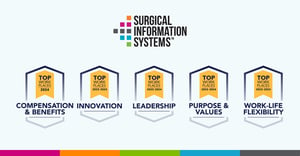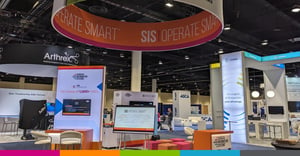 Phenelle Segal, RN, is founder and president of Infection Control Consulting Services, a provider of infection prevention services to a variety of healthcare facilities and organizations, including ASCs.
Phenelle Segal, RN, is founder and president of Infection Control Consulting Services, a provider of infection prevention services to a variety of healthcare facilities and organizations, including ASCs.
Q: What is the ASC Infection Control Surveyor Worksheet (ICSW)?
Phenelle Segal: ICSW is used by surveyors — both state and federal — to determine infection control Conditions for Coverage compliance during surveys. It is comprised of two parts: part 1 includes ASC general characteristics and part 2 addresses several practices related to infection control. The surveyors use this worksheet as a guide when conducting onsite surveys. The process includes observing practices as well as interviewing staff and reviewing policies, procedures, and other documents.
Q: CMS recently announced (pdf) revisions were made to ICSW. Why were these revisions made?
PS: Standards of practice in infection prevention are changing rapidly. Survey-related questions often result in confusion and for the most part go unresolved. The worksheet's update is intended to bring future surveys into alignment with changes in practice and recently released guidance. In addition, CMS noted in a memorandum that the revisions should help "improve the clarity of some questions."
Q: Why should ASCs review these revisions?
PS: In the memorandum, CMS specified that the updated ICSW is "effective immediately." Since there are significant additions to the 2012 update, ASCs would fare best by understanding the additional expectations relating to compliance with the infection control Conditions for Coverage.
Q: What are some of the more significant revisions you think ASCs should know about?
PS: While all the changes are important to review and assess, there are a few revisions that stand out as more significant. ASCs should pay particular attention to the section on hand hygiene that forbids staff rendering direct care from wearing artificial nails and/or extenders. This issue has been the subject of many discussions between surveyors and ASC staff during surveys, and, until now, no conclusions had been reached regarding nail enhancements. With this update, CMS is clearly stating that artificial nails and extenders may present an infection control risk.
Safe injection practices also have been an ongoing area of focus for ASC surveyors. There are several changes in the ICSW relating to these practices, including the need to clean the rubber septum of a multi-dose vial with an alcohol swab. Rubber septum cleaning is often the subject of ongoing disagreements between infection prevention-designated staff and staff responsible for drawing up medications, such as anesthesia. This revision should serve to provide clarity on these disagreements.
Other safe injection practice-related changes include the addition of "beyond use" date information added for labeling syringes. "Appropriate storage" of multi-dose vials and use in areas rendering direct care is defined, which should reduce the risk of confusion.
The section on sterilization has several additions and includes verbiage relating to "manufacturer's instructions," biological and chemical indicators, and an entire section dedicated to immediate use steam sterilization (IUSS), all of which are important to ASCs.
Q: What will ASCs want to do with the revised ICSW?
PS: Employees who are responsible for the ASC's infection prevention program should become familiar with the revisions for the purpose of educating staff members. While CMS refers to the 2015 changes as "minor" in the memorandum, in reviewing the ICSW, the changes are significant enough that ASCs should take them seriously.
For more information, contact Phenelle Segal at info@iccs-home.com.


















